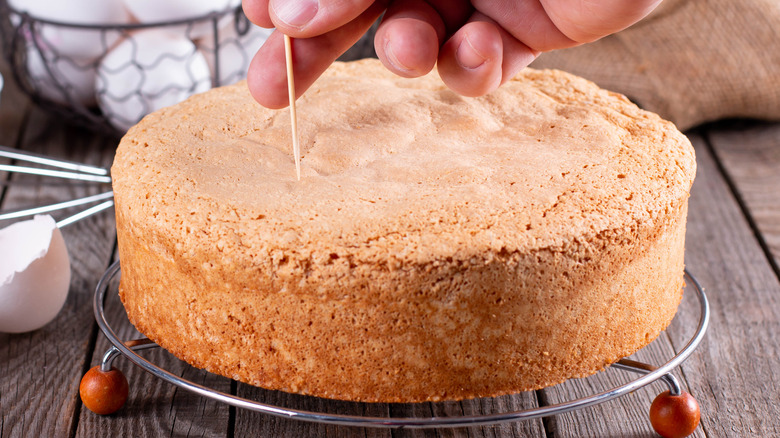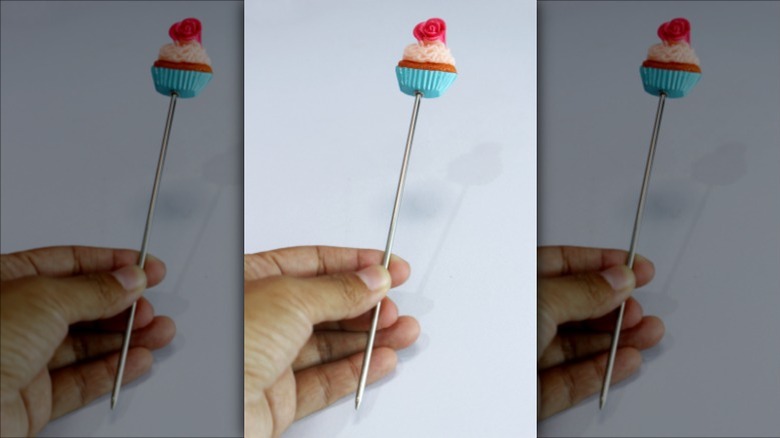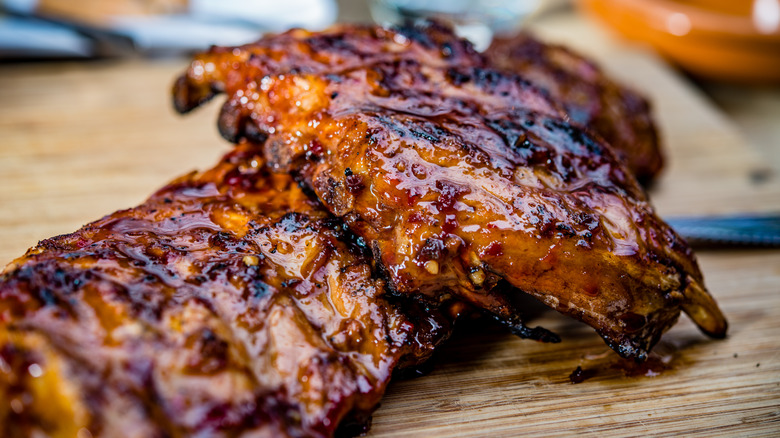Does A Cake Tester Really Do A Better Job Than A Toothpick
We've all been there. As we quietly count down the minutes left on the timer, we start to second guess when to take out the cake. While baking a cake may not be exactly rocket science, it does require some science, as well as near-perfect timing. The traditional technique for gauging whether or not a baked good is ready to come out of the oven entails sticking a wooden toothpick in the center. For the most part, if toothpicks come out clean, then the baked goods are sufficiently cooked.
Although some people may be content with using a toothpick or even a knife's blade to check if a cake is done, many cooks and bakers highly recommend cake testers. A cake tester is a thin metal probe that is inserted into a piece of dessert to check if it's ready to exit the oven.
You should invest in a cake tester
While a toothpick may be a low-cost, accessible option for many home cooks, it does come with its flaws. That's why investing in a cake tester ultimately won't hurt your wallet but might help your baking. The device is generally affordable, ranging from as little as less than a dollar to $10 for fancier cake testers. Cake testers are also reusable and more durable than toothpicks. With wooden toothpicks, you always run the small risk of leaving small splinters in your baked goods, which is not an issue with a steel cake tester.
Whether you use a cake tester or toothpick, you still have to be diligent. The general rule is that baked goods need more time in the oven if the toothpick comes out with batter stuck to it. But sometimes bits of crumbs clinging to the toothpick or even a cake tester is okay.
Cake testers can be used for meats and veggies, too
A cake tester is a three-in-one kitchen gadget. In addition to testing cakes, cake testers can help you determine if meats and vegetables are finished cooking. While you can buy and use a meat thermometer, a cake tester works just as well, and you'll be saving money.
Professional chefs and restaurateurs swear by the device. Many chefs prefer to use a cake tester to determine if a piece of meat is fully cooked because it doesn't puncture a huge hole through the meat. "A cake tester makes a hole the size of a pinprick, so you don't risk losing the internal juices that need to redistribute as the meat is resting," chef Danielle Sobel tells Eater. The general rule is when inserting the cake tester in a piece of food, if the metal feels hot, then the meat is fully cooked. A cake tester also doesn't produce visible punctures in vegetables. You'd think with a name like "cake tester" that this device wouldn't be so useful for preparing entrees, but cooking is full of surprises.


